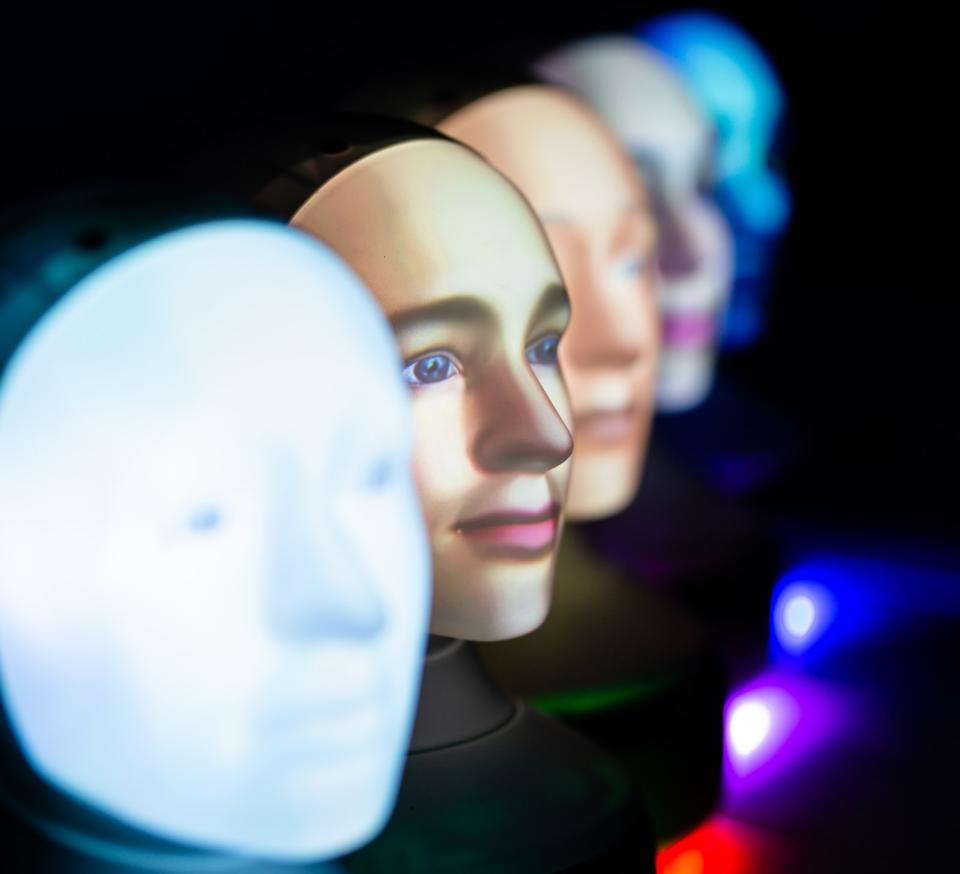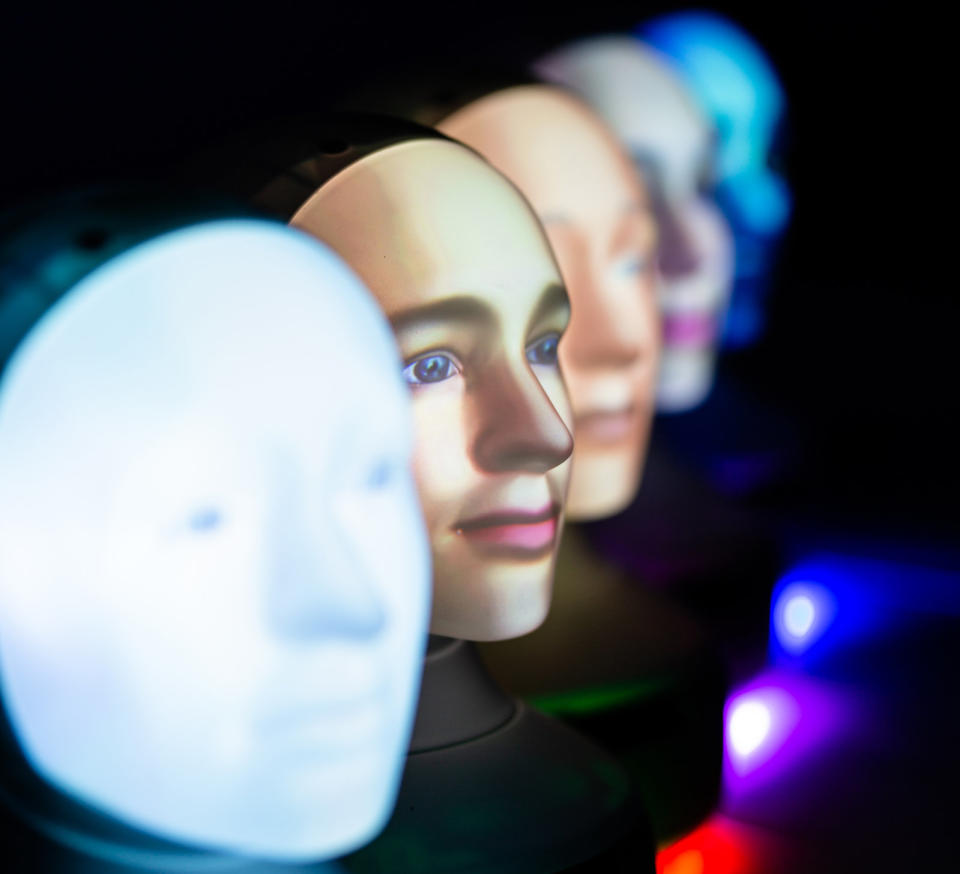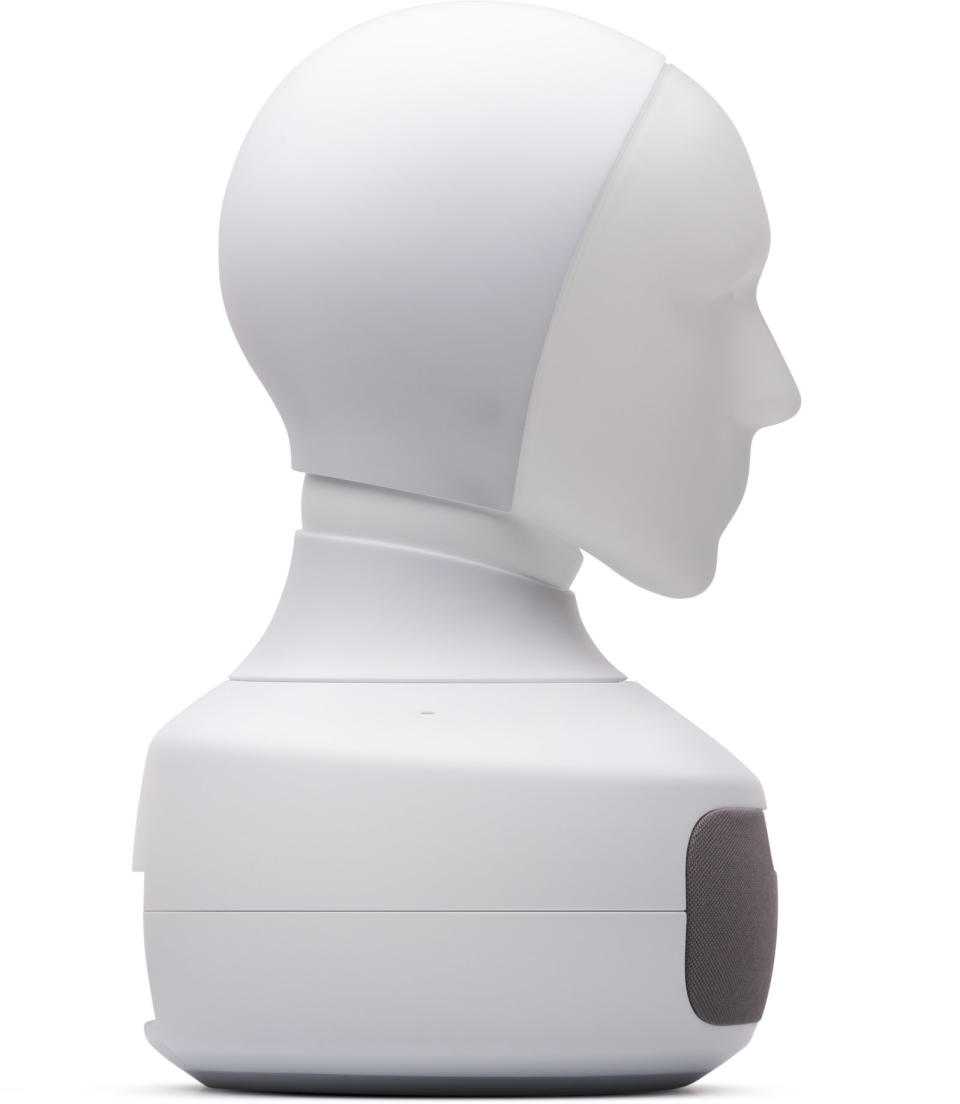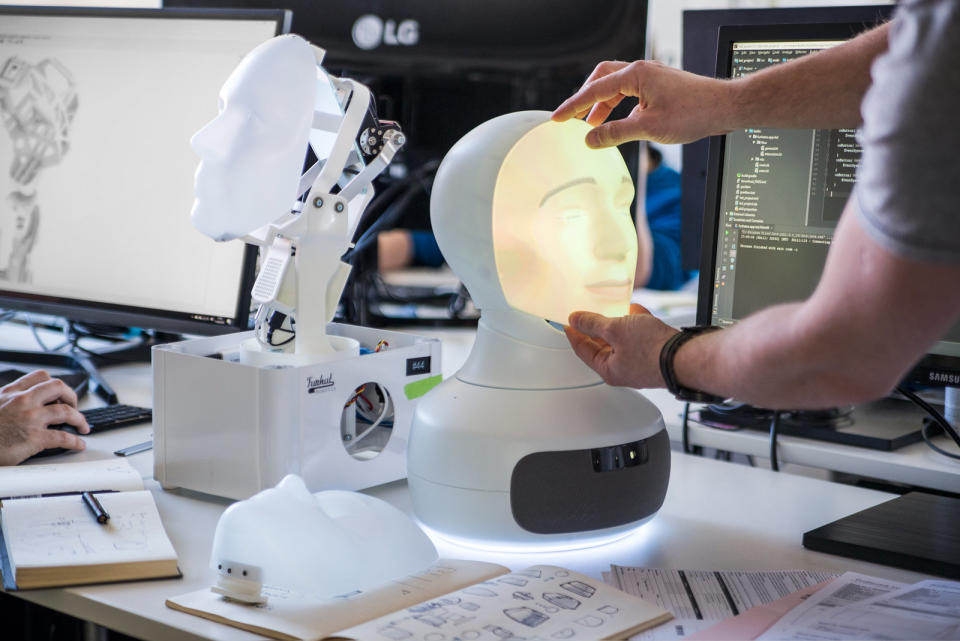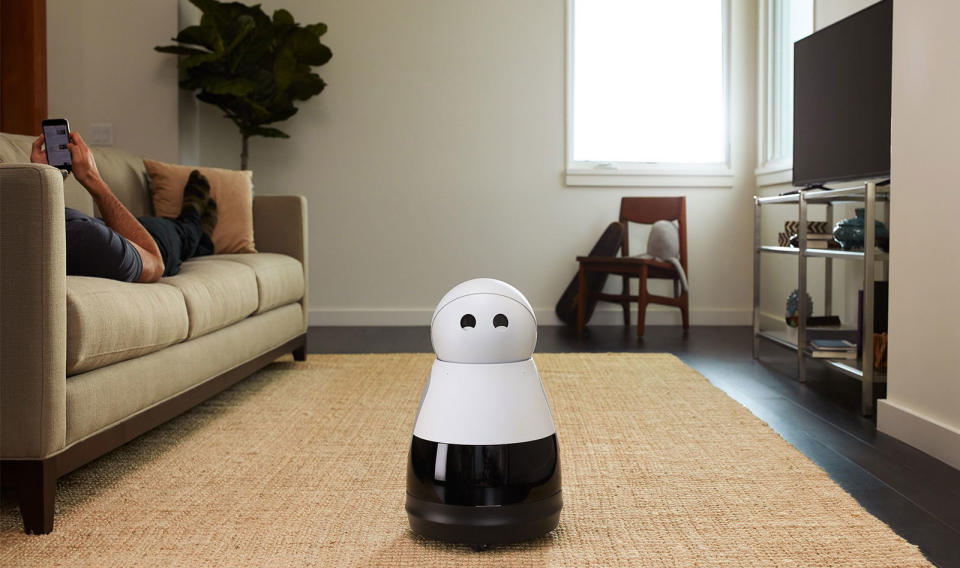Furhat is a social robot for every situation
But could we ever really accept it?
Earlier this month, Furhat Robotics launched its face-swapping social robot after many years of development and prototyping, which began at the Royal Institute of Technology in Stockholm, Sweden. Unlike the majority of robots, Furhat isn't built with any particular purpose in mind. In fact, that's the whole point. The disembodied bust can look and sound like all kinds of different, virtual people; it can take on any number of personalities. It's pitched as a new type of computer interface -- more engaging and understanding than any screen or smart speaker or AI chatbot. And as CEO Samer Al Moubayed puts it, Furhat isn't a replacement for people, but an answer to the absence of robots.
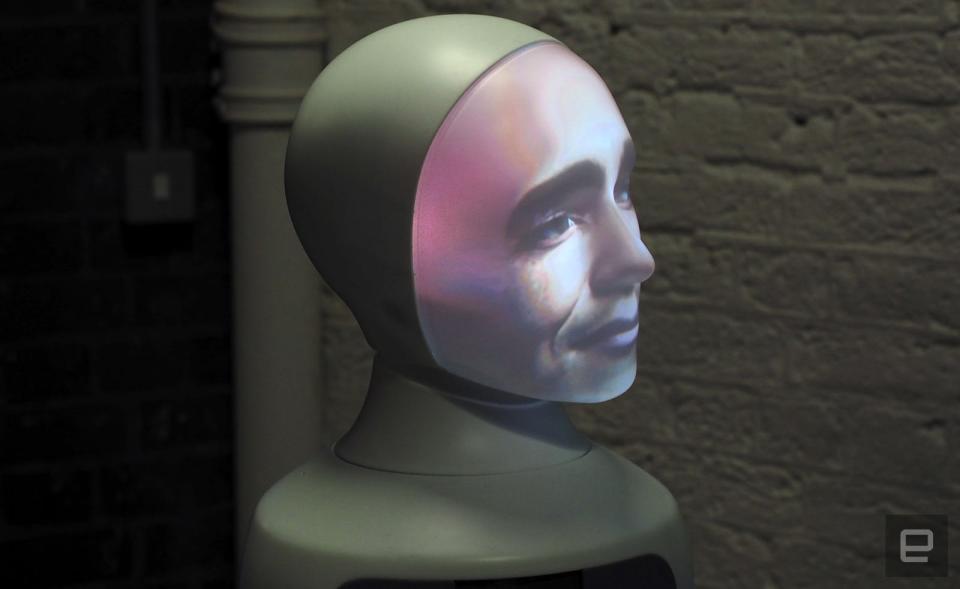
Rather than being an actual robot, Furhat is something that robots are built on top of. The front end is the bust itself. A projection system beams faces on to an opaque mask, while a neck with three degrees of freedom allows for smooth, natural head movement. Cameras and microphones do the observing; speakers do the talking. The back end is basically an operating system that manages a sort of base-level intelligence. Furhat constantly monitors the faces (their position and expressions) of people in front of it. By understanding where you're looking and how you're standing, it knows when it's being spoken to and when to shut up and listen to the conversation happening around it.
This humanesque approach to observation is key to the idea of social robots. Instead of being a question-and-answer machine like a smart speaker/assistant, it is aware of, and can react to, much more complex environments and situations. It's on top of this operating system, which turns raw input into contextual data, that developers can plug in their specific robot personalities. There is a bunch of developer tools already available to support third parties in creating these, as you'd expect with something that's billed as a platform rather than a piece of hardware with a specific-use case. These include a wide selection of different, pre-licensed voices in many languages, and stock faces of various ages and ethnicities (as well as characters like a dog with droopy jowls). Then there's the more complicated stuff like AI natural-language processing and tools for coordinating head movements and facial expressions.
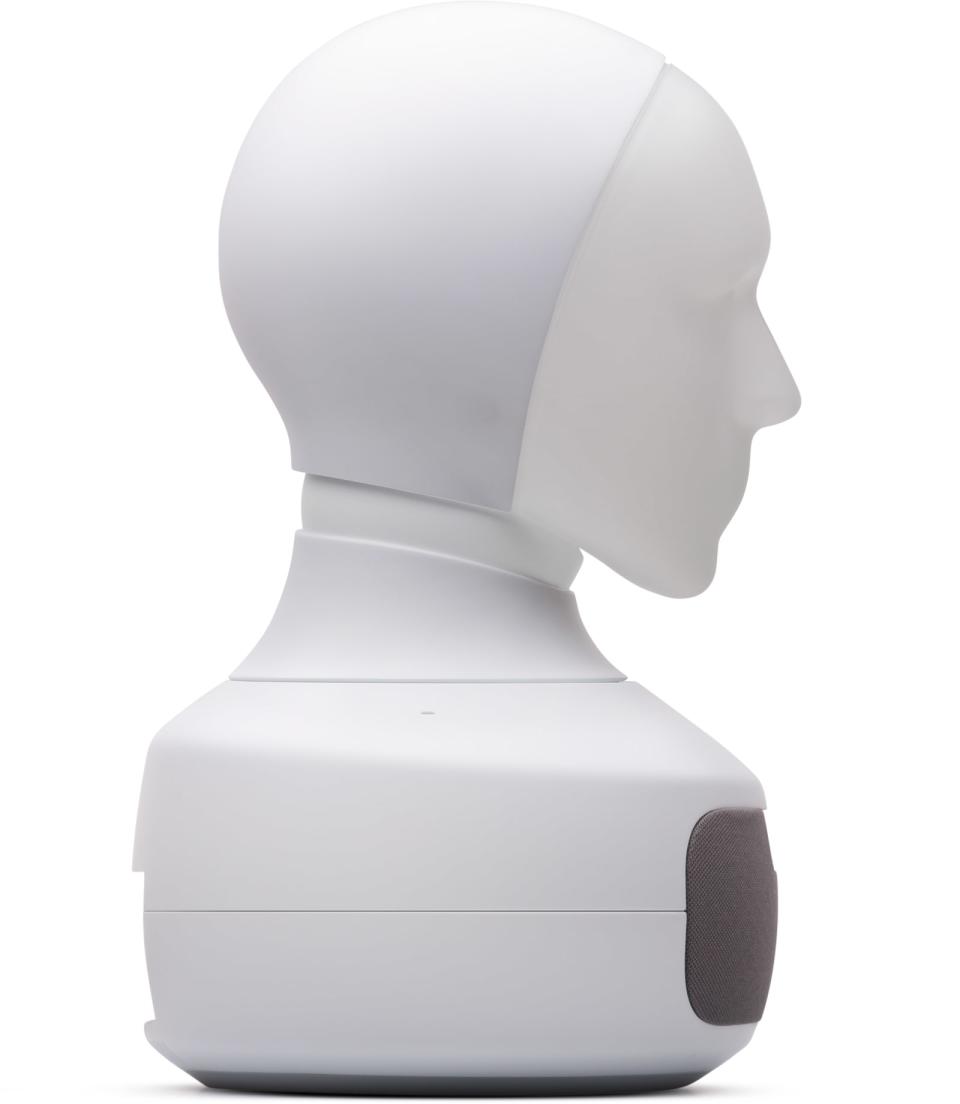
Sitting in a room with one of these animated busts, it's interesting how you process its presence. It doesn't have that unnerving, Uncanny Valley vibe, nor does it look quite like the metallic, humanoid robots of pop culture. Even in its idle state, the head looks around the room, tilting its head occasionally in almost a naive, puppy-like manner. Its eyes flit side to side and it blinks; the corners of its mouth twitch and eyebrows move in the same unconscious way a person's would. The psychology of it is fascinating: how putting a face and neck on a computer makes it inherently more relatable. It looks kind of like the Sonny from I, Robot, if Sonny were able to assume more lifelike qualities of ethnicity, age and gender. Not too cute to be considered a toy, but not realistic enough to be creepy or sinister.
Furhat isn't your classic, unproven chicken-and-egg startup with a hardware platform and a hope that developers will make use of it. During the many years of development, the company's attracted various partners. Merck is turning Furhat into a rehabilitation tool for multiple sclerosis sufferers, KMPG is training it to dispense financial advice and Honda thinks it could help the elderly interact with smart homes. It's also attracted the interest of Disney and Intel.

Teaming up with Deutsche Bahn, Furhat created a multilingual concierge that's manning a desk at Germany's Frankfurt Airport. An employment agency in Sweden is preparing people for job interviews using Furhat, and, in a few schools in Stockholm, it's a teaching assistant. Rabobank in The Netherlands is using Furhat to train staff on how to have difficult, sensitive conversations like turning someone down for a loan. It can pretend to be angry or upset, placing the agent in a range of emotional scenarios. A recruitment firm is about to start conducting onboarding interviews through Furhat, removing any potential biases the human element might introduce.
Psychologists at Stockholm University are creating a robot personality that exhibits signs of depression to fill the training gap between reading books and actually coming across a depressed patient in a real clinical scenario. Furhat itself developed a character with early stage Alzheimer's that can be forgetful and repetitive to show the initial signs of dementia.
In a sense, the company and its partners are already showing how versatile the robot bust can be. The idea now is that you don't need to be a big firm or institution. Anyone can inquire about leasing or buying the hardware and develop their own.
Al Moubayed sees potential everywhere, particularly where people have already given way to interfaces. Instead of visiting a price comparison website, Furhat could be your new travel agent. Instead of tapping at a screen in McDonald's, Furhat could take your order -- and being aware of context means it will know to listen to the adult and not their kids calling for ice cream. It's a customer-service agent that never gets angry, bored, frustrated, hungry or tired. It could help you learn a language, conversing with you in real-time in a way a book can't. It could don a cartoon character's face and read your children a bedtime story or remind them to clean their rooms so you don't have to be the bad guy. From serious applications in healthcare to being a comical information point at a theme park, the applications are vast and varied.
Social robotics -- the notion that robots can connect with us on an emotional level as opposed to being machines designed for physical tasks -- is still in its infancy. Advancements in AI are starting to allow us to communicate more naturally with computers, but we're still figuring out where robots could fit into society. What forms they should take is an interesting question, too -- we know, for example, that it's much easier for us to form a bond with something that looks "cute." But if, in some theoretical future, you have to ask a robot receptionist at a hospital what room your loved one is in, you probably wouldn't find it appropriate if that receptionist looked like a cuddly bear.
We haven't found a great deal of solid use cases for social robots just yet, though simple companionship is one area in which they seem to be having a genuine impact. Japanese nursing homes have been using a social robot that resembles a seal pup for nearly 15 years, and there are clear signs companion robots can improve mental health. In the same vein, Toyota's Kirobo Mini companion robot is designed specifically to make casual conversation with drivers on long and lonely journeys. Otherwise, social robots like Pepper are being used as quirky, engaging teaching assistants for obvious reasons, and as half-novelty, half-functional guides, primarily in airports.
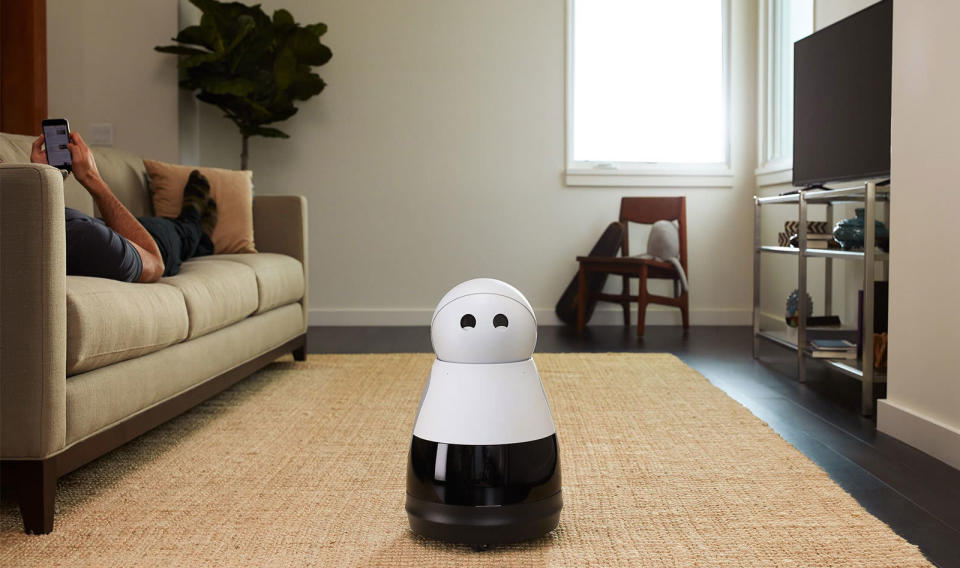
Mayfield Robotics hoped to put social robots in homes with the Kuri, which wasn't really created with any specific purpose other than to become part of the family. It could read stories to kids, play with pets and take pictures of special moments, but Mayfield eventually decided it simply couldn't build a business from Kuri. Furhat doesn't really do anything -- it's not designed for a specific function, or limited by the ideas of a single company. Instead, it's a test bed for everyone with an idea for a social robot to work with.
But how ready we are to deal with human-like robots in everyday life? A recruitment agent might feel uncomfortable interviewing someone with autism, for example, but is that person going to be comfortable talking to a robot? Who's to say a robot is going to bring the best out in a candidate, and how prepared is a customer-service agent really going to be when the only credit card they've declined is one of a faux-angry floating face? Is it ethical to use conversational robots to keep lonely, elderly people company, and is an annoyed traveler going to be more or less frustrated if they have to talk to a robot for an update on their delayed flight?
Social robotics as a broad concept isn't dissimilar to self-driving cars, in a way. The promise is great; game-changing to a degree. But just as many people will never be comfortable handing the wheel over to a computer, so will others fundamentally reject the idea that a robot could ever understand us in the ways we understand each other.

